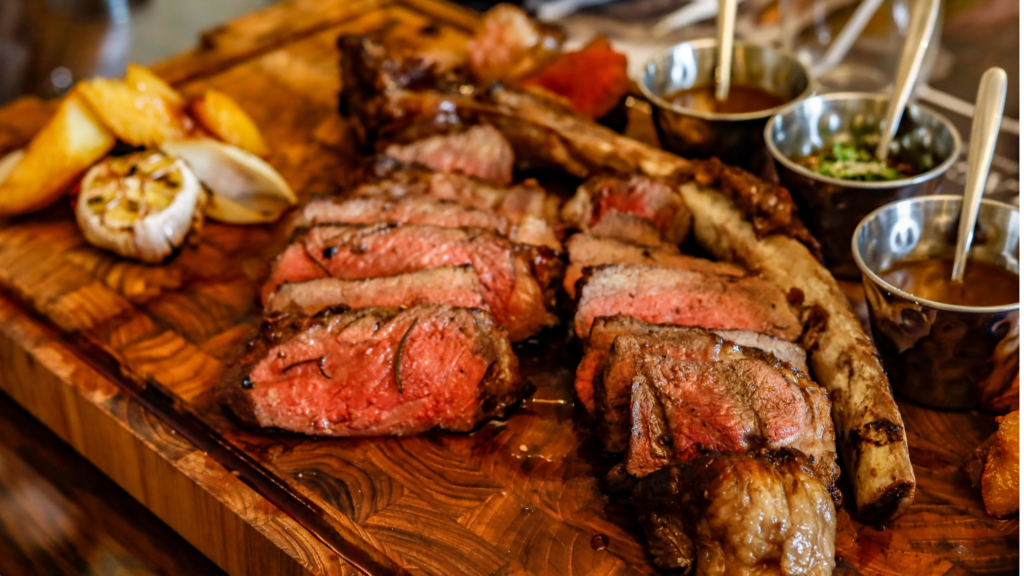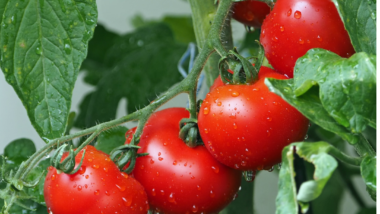Eat your vegetables! Children everywhere are taught – indoctrinated really – that they must eat at least five servings of vegetables each and every day. After all, they grow right out of the ground and are nourished by water and sunlight! If something is made out of a plant, then it is good for us, right? Right?!
Yeah. Like tobacco? Or heroin? Or even the chair you are sitting in? Those are all made from plants. Yum, grab a spoon!
I hate to be the one to break it to you…OK, I am happy to break this to you: just because something is “made from plants” does not mean it is good for us and we can eat it with impunity. Believe it or not, for some people, the opposite may even be true.
“Wait, what? But the government’s MyPlate says to load about 75% of my plate with plant products!”
Oh, honey. Though most of us want to believe that the federal government has our best interest in mind, the truth is that MyPlate is a product of the United States Department of Agriculture (USDA). The government agency that is charged with creating favorable conditions for the nation’s farmers tells us what we should eat. In fact, in the past 40 years, the USDA has created the Basic Four and the Food Pyramid, both of which they have since backed away from.
Because we are taught to eat our veggies from an early age, it is tough to think that this information could be wrong. But consider this: early man was most certainly not eating five servings of fruits and vegetables per day. They would eat only what was both local and in season as a supplement to animal products. When it came to grains, those may have been eaten during times of scarcity to keep our paleo pals plump. Grains are rather good at doing that.
The Cavemen Had it Right

As it turns out, our ancient ancestors were on to something all those ages ago. Many of the fruits and vegetables we eat today contain lectins, phytates, polyphenols, oxalates, and sulforaphane. Though some people may tolerate these with little to no concern, the fact remains that there are many people who simply cannot. Why is that? Let’s dive in:
Lectins: Lectins are the plant’s very own defense mechanism. They exist as a way for fruits and vegetables to defend themselves against being eaten. Their purpose is to cause harm to those who dare ingest of them. Since the body does not properly metabolize them, they make their way to the gut where they do their damage. If you are having issues with your gut, such as bloating or gas, that little pest lectin may very well be to blame. Gluten is part of the lectin family, and most of us know at least a few people who struggle with gluten.
Phytates: Commonly found in beans, nuts, and grains, phytates also have a well-earned bad reputation. They are even referred to as an anti-nutrient. This is thanks to their ability to hinder the absorption of many essential micronutrients. Minerals such as iron, calcium, and zinc are required for good health because the body does not make enough of them to sustain itself. Phytates prevent our body from being able to use these nutrients, and as a result, we may become deficient.
Polyphenols: Though there are some good ones out there, not all polyphenols are created equal. Caffeic acid, which is found in coffee beans, may have carcinogenic effects, and can flush out calcium in the urine. This may not be a problem in small doses, but if you happen to be mainlining coffee like it’s your job and not feeling too hot by the end of the day, this particular polyphenol may be to blame. Thinking of switching to tea because of the above? You might want to think again. The polyphenols found in tea, known as tannins, can actually inhibit absorption of iron, and potentially trigger anemia.
What about resveratrol, though? Unfortunately, this popular “antioxidant” has been linked to compromised androgen receptors. Ouch.
These negative effects on the body which these so-called “superfoods” (which contain other polyphenols like capsaicin, curcumin, flavonoids, lignans, quercetin, resveratrol, and stilbenes,) suddenly makes these foods appear not so super anymore, huh?
Sulforaphane: Those who are at high risk for certain cancers should steer clear of sulforaphane. In high doses, it may cause a decrease in both muscular strength and motor skills. They are found in cruciferous vegetables such as broccoli and kale. If you were looking for a reason to stop eating kale, you’ve got one, and you’re welcome.
Oxalates: These guys bind to the thyroid hormone T3. Those with thyroid disease may find that oxalates are doing their best to make it worse. They are also bad news for those with kidney disease as they increase the risk of kidney stones. Found in such foods as beans and leafy greens, these are best avoided by those with kidney or thyroid issues.
Is There Hope?
Well, yeah! An animal based diet, also known as a low-toxin Carnivore Diet, is a great start if you would like to mitigate any gut issues or are just considering cutting a good amount of lectins, phytates, polyphenols, oxalates, and sulforaphane out of your diet. These toxic properties are natural defense mechanisms that are found in the roots, stems, buds, and other parts of many plants we have long considered, or misunderstood even, to be healthy foods. All meat products, such as pasture-raised beef, chicken, and organ meats, are on the table in a low-toxin carnivore diet.
When it comes to produce that get the green light, consider green herbs, summer and winter squashes, melons, berries, and most fruits – except those in the nightshade family, like tomatoes, goji berries, eggplant, etc. That means a dinner of steak cooked in tallow, or butter if you tolerate dairy, seasoned with Real salt and sage with a side of grilled zucchini and sweet potato mash is a low toxin option. That hardly sounds like a “diet” at all!
But What About Dairy and Eggs?
For some, dairy and eggs may still cause some issues. If you are considering an animal based, low-toxin carnivore diet, start by avoiding dairy and maybe even eggs as well. Another option is to temporarily avoid the most inflammatory part of the egg: the whites. After you have given yourself some time (30 to 90 days) on a low-toxin carnivore diet and feel like the amazing apex predator specimen that you are, then try adding back high-quality dairy or eggs to see how you feel.
Be sure to consider quality as well. Choose organic, grass-fed, unpasteurized dairy products…if you can find it raw or hunt down A2 dairy, even better! Also try goat and sheep milk as some people can tolerate it much better than cow’s milk. It may be the case that you are able to tolerate these foods just fine. If after reintroducing them you start to feel like hot garbage, then now you know that these foods are best avoided.

Got It. Eating Plants = Bad News
Not so fast. There are plants that are considered survival foods of the paleolithic era and by modern-day tribal communities. These plants are still well-tolerated by most people today when eaten in moderation. An animal based, low-toxin carnivore diet will help you determine what you can and cannot tolerate. If it so happens that all along vegetables were doing you more harm than good, then treat yourself to a delicious, juicy grass-fed steak instead!


